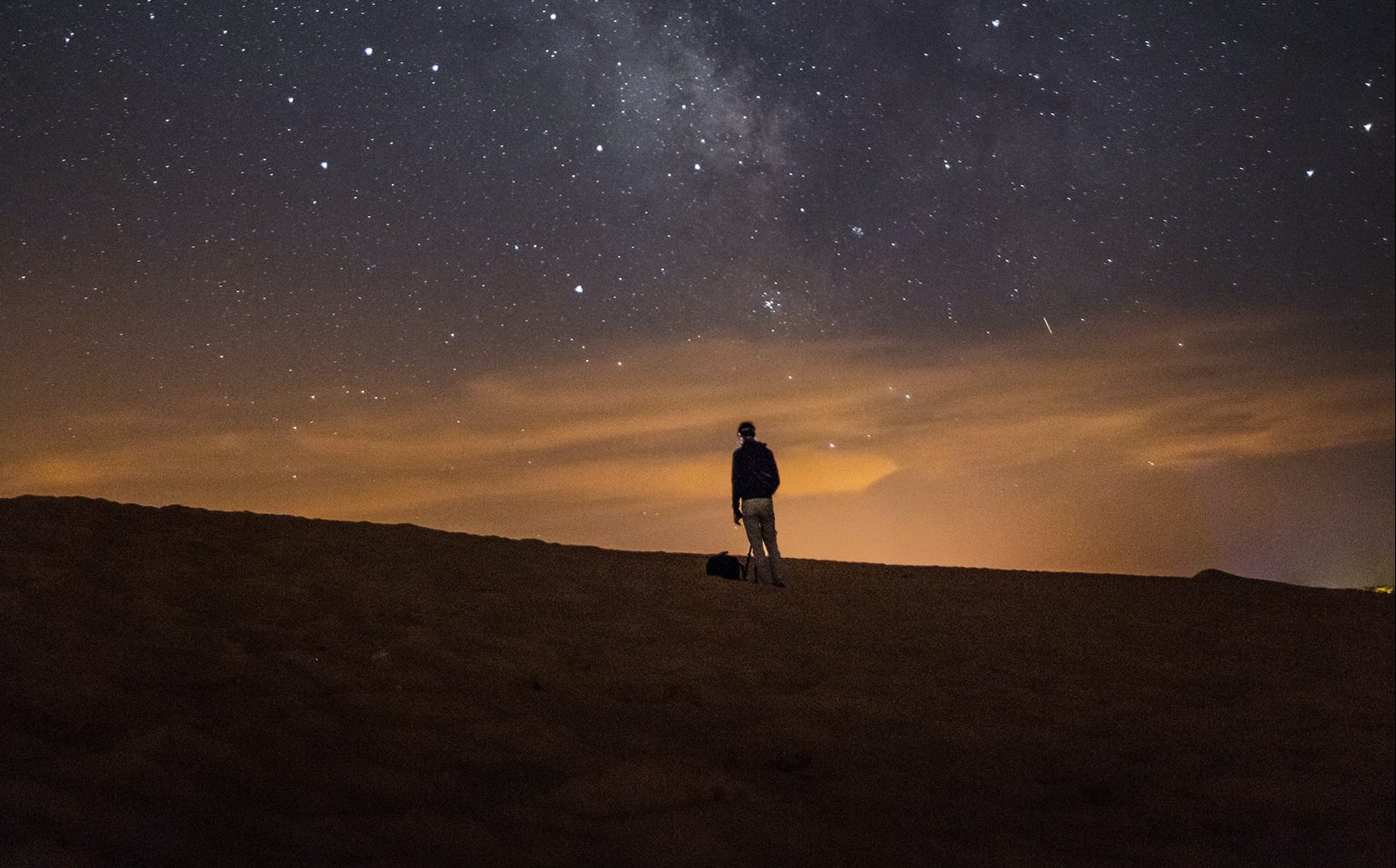A recent National Geographic article explains and explores the thrill and uniqueness of star walking. According to the article, this is more than simply hiking at night and taking a gander at the night sky as you go along, “Star walking goes a step further by blending hiking with stargazing. Rather than heading to an observatory or setting up a telescope in your backyard, star walking takes you on a brief journey to look at the stars from different viewpoints.”
You don’t need to be a photographer or a frequent hiker to go star walking, and there are benefits to going for a stroll at night. The trails are a lot less crowded, maybe even deserted, and you get all the health perks of being outside such as decreasing blood pressure and stress levels (who doesn’t need that?). It’s become a therapeutic choice for outdoor recreation for many people during the pandemic, according to the article.
When should you go?
Right now, in the late winter and early spring, as we approach the spring equinox, there are equal lengths of day and night. So, you can go star walking fairly early in the evening, instead of waiting until 11 or later as you would in the summer months. Plus, in mid-April, the annual Lyrid meteor shower is expected, giving star walkers even more reason to hit rural trails.
That’s not to say summer is a bad time to go on a star walk. You’ll just be embarking later into the evening. But you can’t beat a warm summer night that feels cool after a warmer summer day, hearing the crickets and frogs, and getting lost in the expanse of the dark yet twinkling sky.
What should you bring?
The National Geographic article cites Gary Lintern as recommending going naked-eye stargazing rather than bringing along binoculars or a telescope. Of course, you can if you want to, but Lintern wants people to appreciate watching the night sky without equipment because your mind it allowed to wander more freely and openly. We spend so much life gazing into some device, it’s a decent suggestion to leave all technical apparatus behind and simply use our given senses to explore the universe.
Wear sturdy shoes, bring an extra layer of clothing, and pack at least a flashlight. Look at a star map or use an app on your phone to get an understanding for what to expect to see when you go star walking.
Where can you go walking at night in Michigan?
You want to find a location that is free from light pollution so that you can get the best view of the night sky. A field or clearing or remote beach would be just fine, if you have ready access to such a spot. Although most public parks and state parks have curfews, there are several parks that do not and have been especially designated as dark sky preserves because they are ideal for star gazing.
There are two International Dark Sky Parks in Michigan, both in the Lower Peninsula: Headlands Dark Sky Park (Emmet County) and Dr. T.K.Lawless Park (Cass County). There are also several dark sky preserves that are a part of Michigan state park network. These dark sky preserves include Lake Hudson Recreation Area, Negwegon State Park, Port Crescent State Park, Rockport Recreation Area, Thompson’s Harbor State Park, and Wilderness State Park. Visit the Michigan DNR website for direct links to the state parks and international dark sky preserves for more information.
Of course, you can’t go wrong with going star walking in the Upper Peninsula, where night pollution is minimal and open space is plenty.
However, the safe thing to do is to revisit a trail you have already traveled or already know very well. Walk with a friend or two, or at least let somebody know you’ll be going. Night tends to make everything seem to slow down, and that goes for star walking, too. Take it more slowly on the trail, take your time viewing the night sky. There’s no need to rush.

